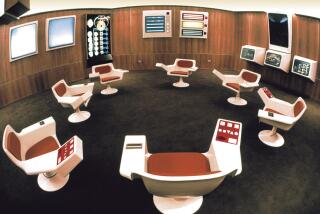CIA’s Spy Cat Proved to Be a Flat-Out Failure
- Share via
WASHINGTON — Soviet-tracking psychics and cats wired as mobile eavesdropping platforms didn’t work out so well. But CIA proposals for spy planes and satellites to peer on America’s adversaries from above became resounding successes.
Recently declassified documents, released Monday by the National Security Archive, detail some of the successful--and silly--research of the CIA’s Directorate of Science and Technology.
The CIA designed and operated spy satellites for years, until the separate National Reconnaissance Office took over many of those duties, said Jeffrey T. Richelson, a researcher with the archive and author of “The Wizards of Langley,” a book detailing the directorate’s efforts. The directorate also developed the U-2 and A-12 spy planes. Another of its advances turned into an integral part of the pacemaker.
In the 1960s, under a program code-named Palladium, scientists trying to design stealthy aircraft figured out how to insert ghost planes on Soviet radar screens. Assisted by the National Security Agency, the CIA eavesdropped on Soviet radar operators and determined the sensitivity of particular Soviet radars.
While the CIA’s scientific successes have become part of the U.S. inventory of spy techniques, its follies are notable as well, Richelson said.
Many of those have been previously documented in books about the CIA. The multi-agency plan to use psychics--called “remote viewers”--to map Soviet military bases and 1950s research into interrogation drugs are well known.
Another project, known as “Acoustic Kitty,” involved wiring a cat with transmitting and control devices, allowing it to serve as a mobile listening post.
A heavily redacted 1967 government memo released by the archive last week suggests that cats can be altered and trained, but concludes the program wouldn’t work.
“The program would not lend itself in a practical sense to our highly specialized needs,” it says. “The environmental and security factors in using this technique in a real foreign situation force us to conclude that, for our . . . purposes, it would not be practical.”
In the first test of feline surveillance, the cat was run over by a taxi, according to Richelson.
More to Read
Sign up for Essential California
The most important California stories and recommendations in your inbox every morning.
You may occasionally receive promotional content from the Los Angeles Times.













